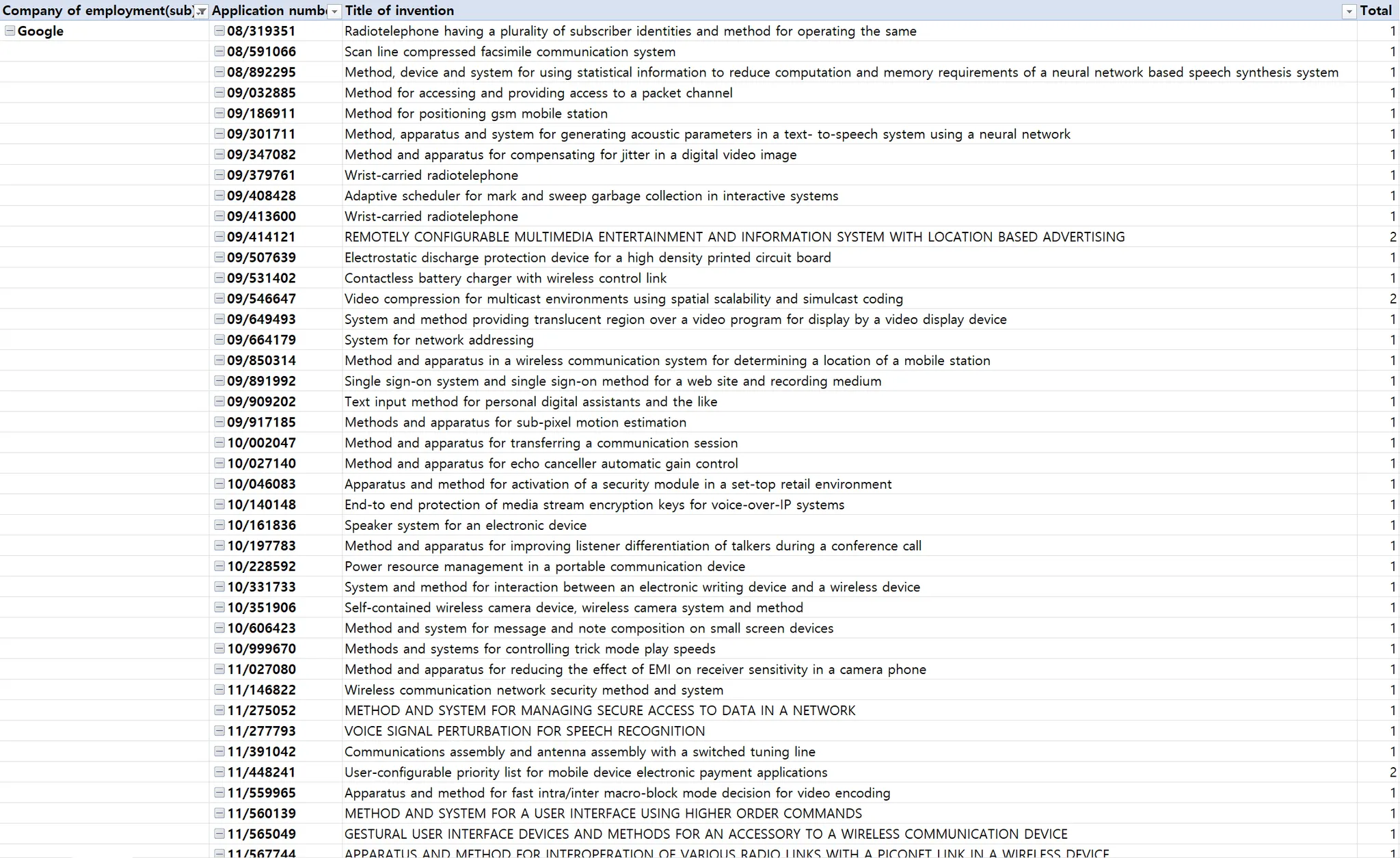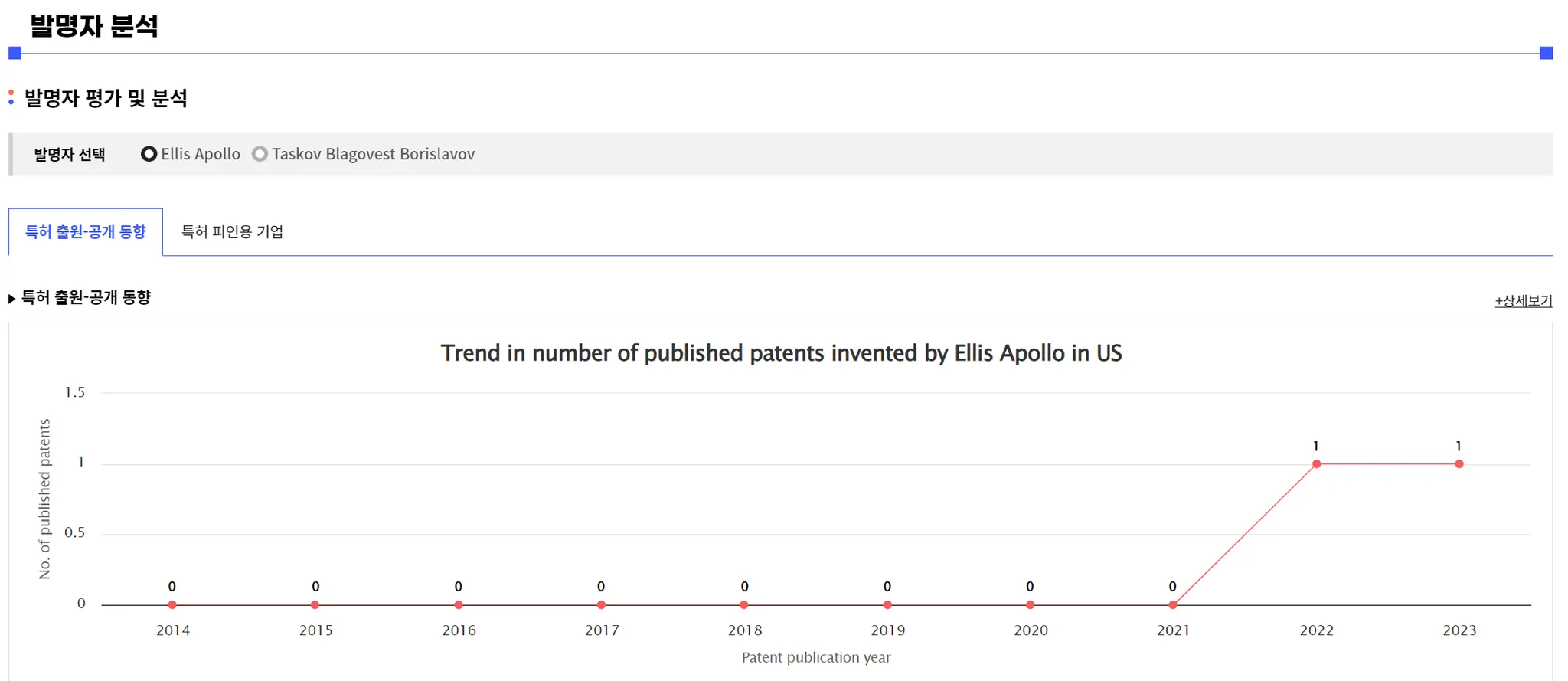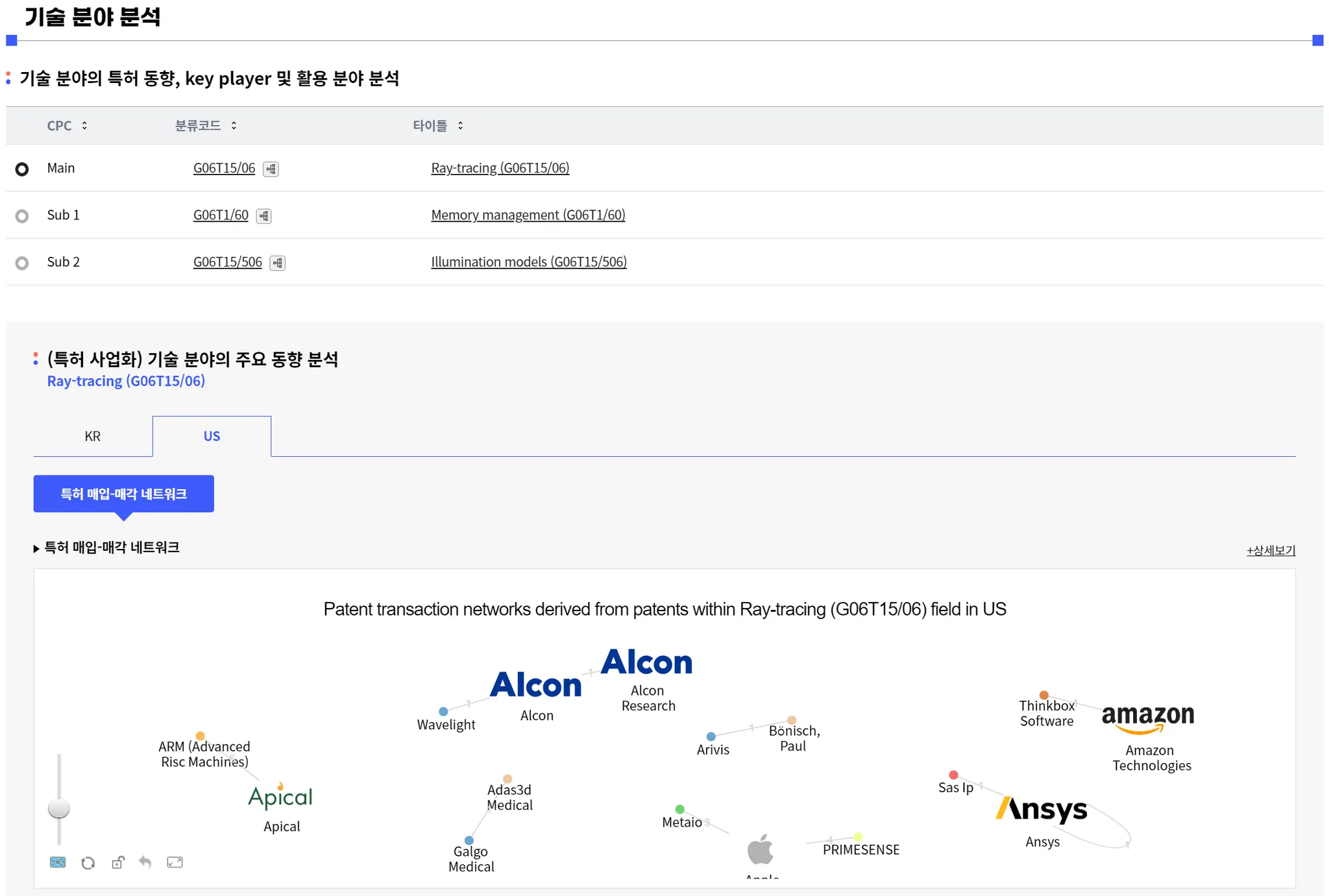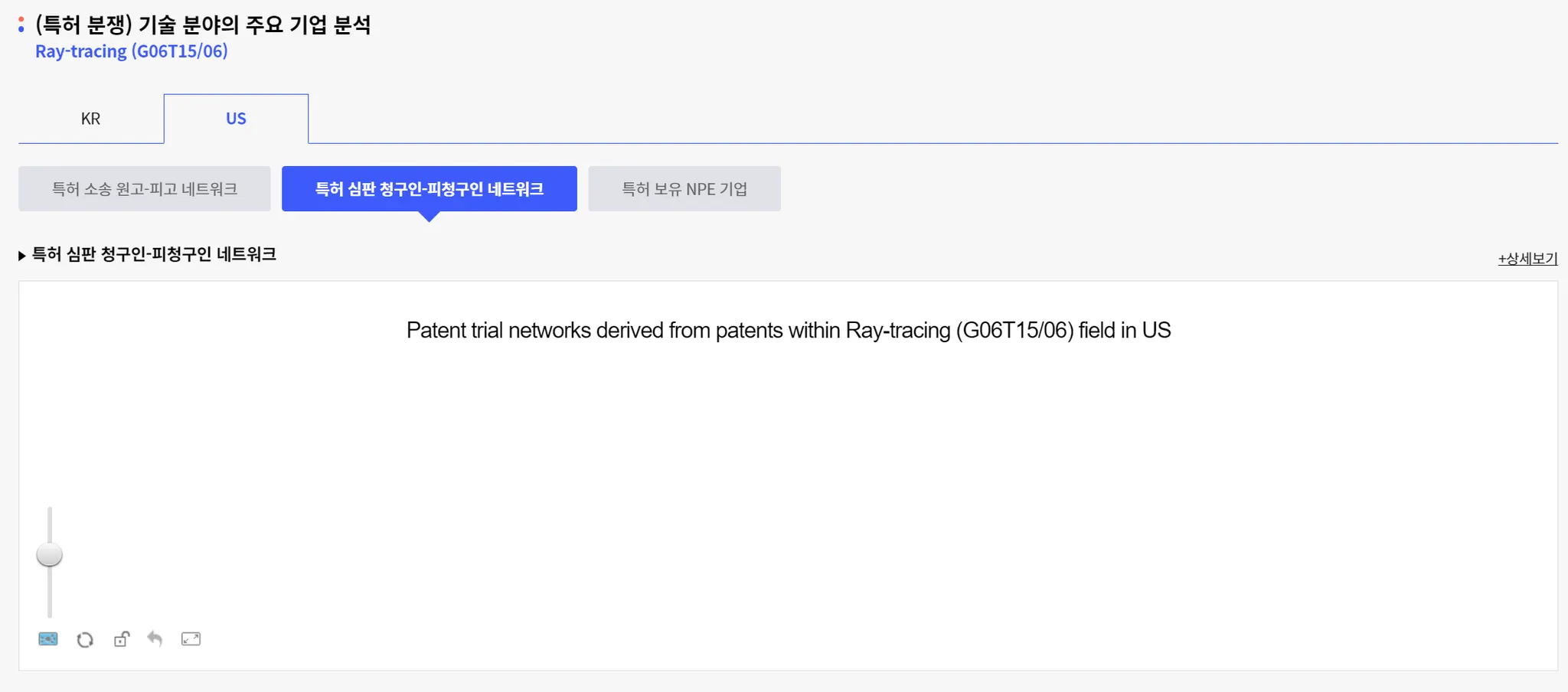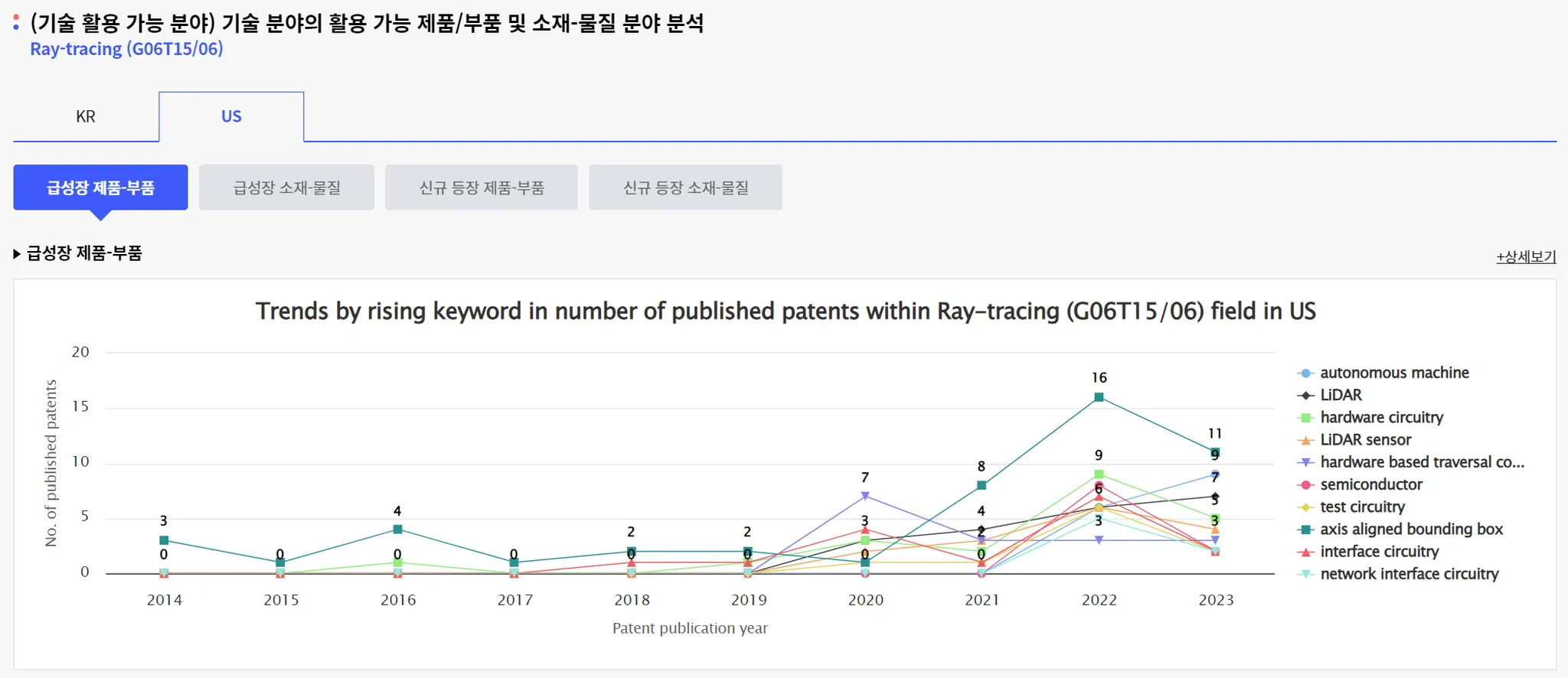Map of identifying target companies for innovation transfer in US(technology monetization/commercialization)
The identification of target companies for innovation transfer and technology monetization/commercialization requires sophisticated use of patent big data. For example, a transferred target company needs special circumstances such as i) strong dependence/relatedness to the patent set being transferred, ii) money, such as spending money, having money, or having money, and iii) being in a dire situation such as patent litigations or trials.
Companies related to purchased patents include i) companies that have purchased patents, ii) companies that have transferred patents through M&A, iii) companies that have received patent practice rights (licenses), iv) companies that have acquired technology companies, and v) companies that have invested in or received investments from technology companies.
Of course, i) specialized companies that are focused on a particular field (have an eye for the value of patents), ii) rapidly growing companies that are rapidly growing their patent portfolio (are spending money), or iii) new companies that are new to a particular field (usually have money) can also be effective targets.
Using the Augmented Reality (AR; AR glass) field as an example, PatentPia GoldenCompass provides contents for finding innovation transfer/technology monetization/commercialization of target companies on a global scale. If you click on the chain(link) marks that are attached to each item in the above utilization map, the example page will open in a new window.
Increased utility in identifying companies with a transferable track record of innovation
Sophisticated match-making
For each specific demanding company i, a set of patents in possession of a specific university/performer i should be customized and packaged and provided to company i.
In the examples below are, only the Motorola patents used to reject the patents of Google out of the 5,100 patents in possession of Motorola. In other words, out of the 5,100 patents in possession of Motorola, there are only a few patents that have an interest(rejection relationship) with a specific company i. This very small packaged patent set has a big significance for a specific company i (because of the preceding patents of KAIST, their patent application is prevented from being registered due to lack of novelty or non-obviousness).
On the other hand, apart from the patent sets delivered to a specific company i (e.g., Google), the data on the relevance of these patent sets to the competing companies of a specific company i should also be provided. This way, the business personnel or decision makers of a specific company i can directly recognize that there is a risk that the Motorola patent sets that are closely related to a specific company i may fall into the hands of their competing companies if the specific company i does not engage in patent purchases, etc.
In addition, the Motorola patent sets closely related to a particular company i need to be provided to the company i's agent (IP law firm, patent attorney, etc.) or technology intermediary company/organization. These representatives or intermediary companies/organizations are likely to leverage the nation's/public's IP transfer programs/funding organizations to get the technology transfer to the specific company i. (Sophisticated targeting/packaging + emphasis on the risks of not receiving the technology transfer, etc.)
Introduction of tools(image patent maps) to intuitively understand the utility of patents targeted for technology monetization(*coming soon)
e-SMK
The e-SMK created for each individual patent should include a basic introduction to the patent (patent content, subsequent patents citing the patent, patent families, etc. In addition to family patents) and various analysis information. In particular, the analysis information should visually present the patent purchase network (who is purchasing whom's patents, etc.) of the technology field (e.g., IPC or CPC) to which the patent belongs.
And we need not only an analysis of the researchers at universities/research institutes that own those patents, but also an analysis of the inventors who invented those patents (in particular, companies with subsequent patents citing that inventor's invention, or companies with subsequent patents rejected because of that inventor's invention, etc.). Most importantly, among these subsequent patent-holding companies. Because if your competitors are included, the likelihood of the technology being transferred is likely to increase, i.e., the sensitivity/intensity of the sensitivity/strength of the interested party's relationship with the patent, its inventor, and yourself will change significantly.
If you replace the application number in the example link (18/464818 above) with another application number, you will be provided with an e-SMK with the replaced application number. The e-SMK site will not ask you to log in/register as a user, etc.
Patent Description
Inventor Analysis
Technology field analysis
Analyze patent transaction networks in technology fields.
Analyze the network of litigation in a technology field.
Analyze keywords (rising, new appearing, etc.) in a technology field.
Map of identifying target companies for global innovation transfer(technology monetization/commercialization)
Using Augmented Reality (AR; AR glass) technology field as an example, PatentPia GoldenCompass provides contents for discovering innovation transfer/technology monetization target companies on a global scale. If you click on the chain(link) marks that are combined to each item in the above utilization map, the example page will open in a new window.
